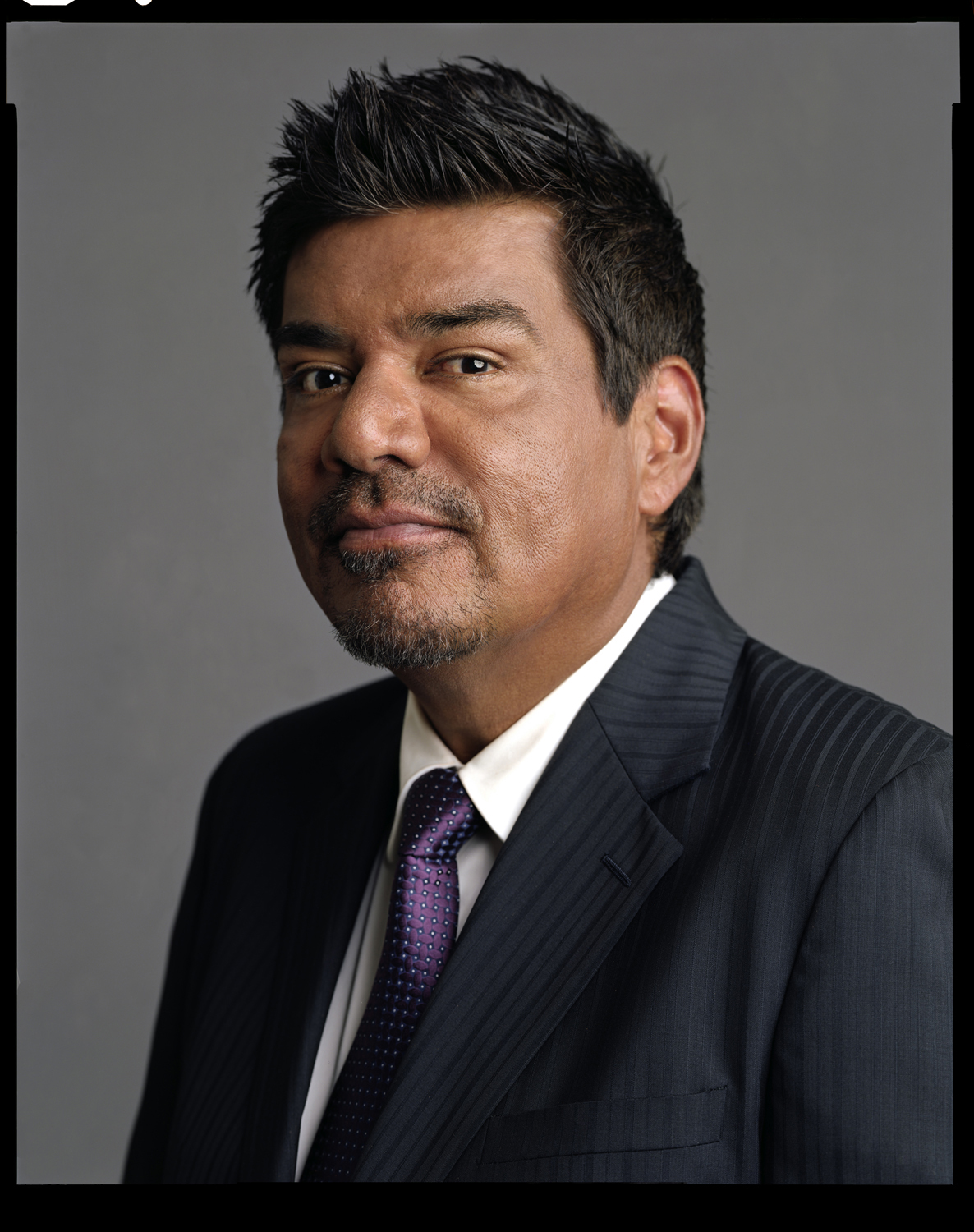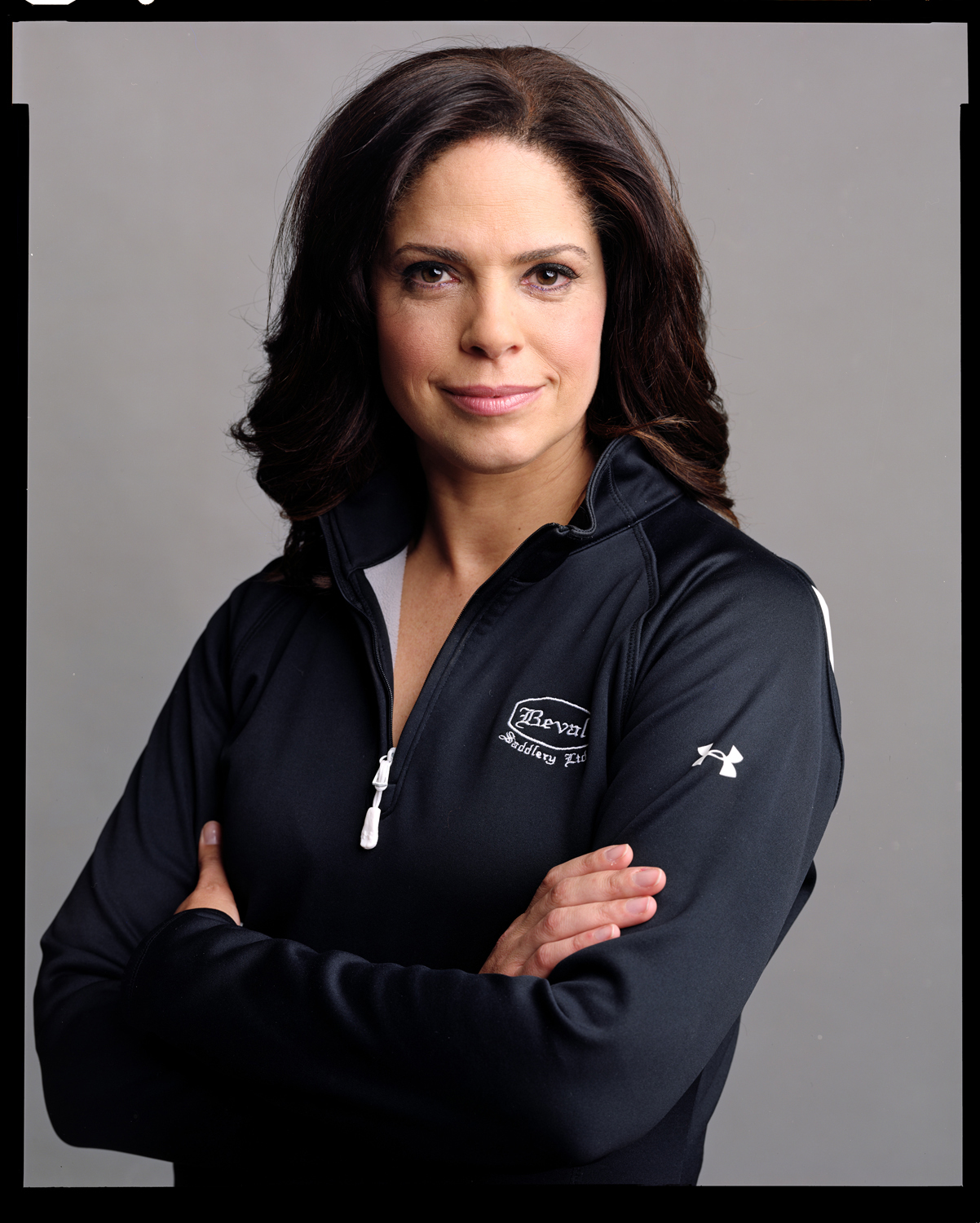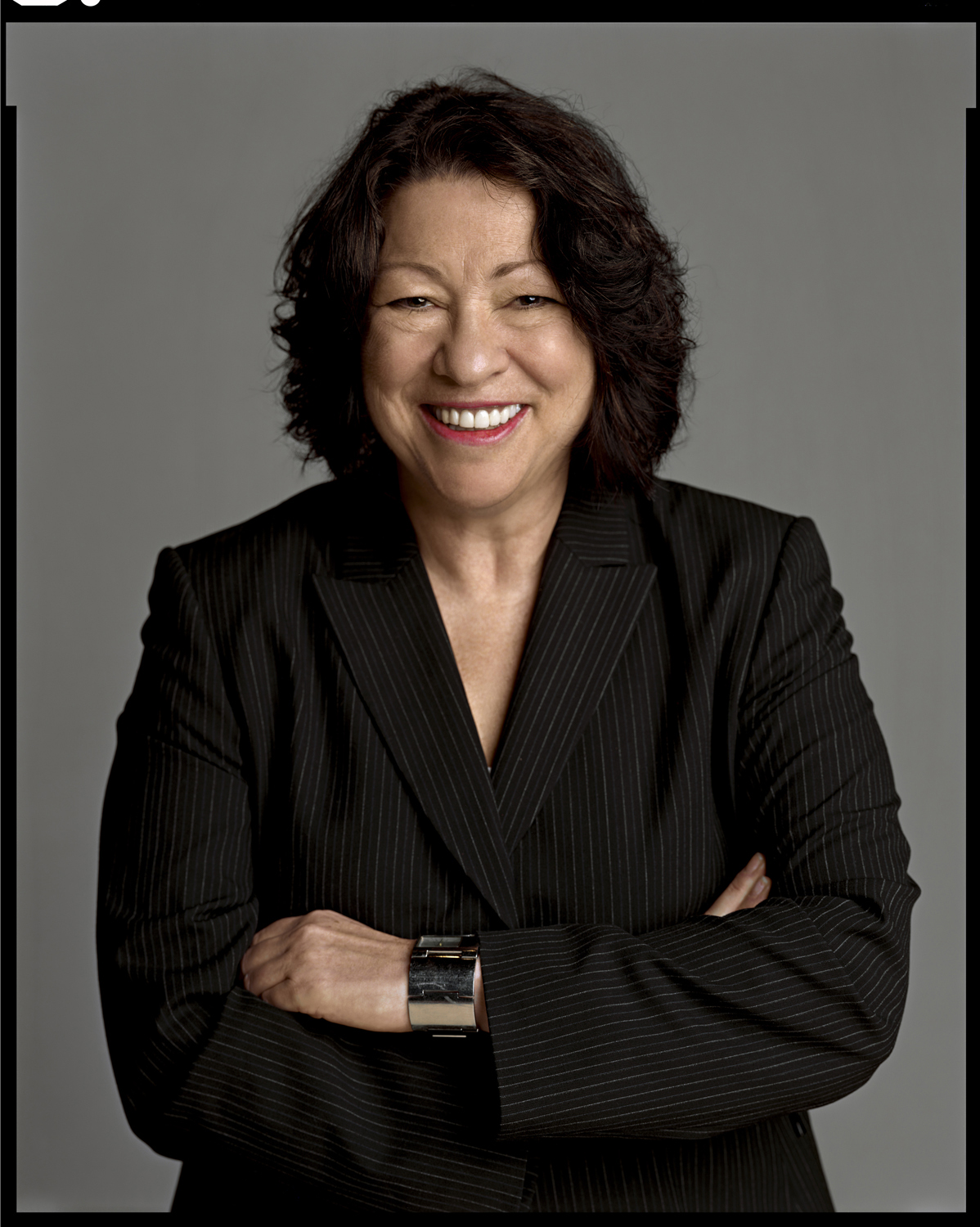Greenfield-Sanders received a B.A. in Art History from Columbia University and a M.A. in film from the American Film Institute in Los Angeles. In 1998 he won a Grammy Award for best music documentary for the very first documentary he made: “Lou Reed: Rock and Roll Heart.” Ever since, he has been producing and directing award winning films and portrait exhibitions, like “Thinking XXX”, “The Black List” now on volume three, and “About Face,” a view into the lives of super-models. His art portraits are in the collections at The Museum of Modern Art in New York City and at the Museum of Fine Arts in Houston, as well as in numerous other museums, including The National Portrait Gallery, The Metropolitan, The Whitney, and The Brooklyn Museum.
The Latino List was at The Brooklyn Museum, August through December 2011. It consisted of 25 large format art portraits, as well as excerpts of the HBO documentary film. The film premiered on September 29th and ran in its entirety during the Hispanic Heritage Month, 2011. Volume Two was being produced at the same time that Volume One was still being worked on, and there is an expectation for a Volume Three.
For us, Greenfield-Sanders is a real Latin Lover and here he talks to us about his experience in and his views on the Latino Community in the US. He shares with us what it meant to work with such important people as Supreme Court Justice, Sonia Sotomayor and NASA Astronaut Jose Hernandez, and he comments on bilingualism and the Latino Vote.
How did growing up in Miami influence your relationship with the Latinos?
I was born in Miami in 1952. It was a sleepy little tourist town. Less than a decade later, Cubans started to flee Castro, and everything changed.
I can only imagine. Did it immediately affected your daily life as personal experiences or was it only in the conversations around you that you had some influence?
Miami become more cosmopolitan. I noticed it in the food, the nightlife . . . the influence was on many levels.
How did you become involved with the Latino community and culture?
Living in Miami, when I did, one didn’t have a choice. I learned to speak decent Spanish, had many Cuban friends and loved much of the energy and excitement that Cubans brought to Miami. It wasn’t until I went to college in New York at Columbia University that I discovered that Latino was not just Cuban. In those days in New York, it was Puerto Rican. When I went to graduate school in Los Angeles, at the American Film Institute, Latino meant Mexican.
A lot of Americans outside of the big cities feel the English language is threatened by the use of Spanish. How do you feel about bilingualism, any words of wisdom?
Americans are so provincial sometimes. It’s pathetic that we don’t learn five languages in school the way that Europeans do. What are we afraid of? Bilingualism?
How did you get started in photography?
In graduate film school at AFI, I started to take photos for the school’s archive of the visiting dignitaries. Alfred Hitchcock corrected my lighting and Bette Davis said, “What the fuck are you doing shooting from below”. I learned from film aristocracy and fell in love with photography.
How did the idea of “The Latino List” came about?
When we started “The Black List” series, we quickly realized that this format of interviewing would work with many minorities. Latinos were an obvious next step. But, it wasn’t until Ingrid Duran and Catherine Pino came to us that we decided to move ahead with “The Latino List”.
I imagine that you were in total control of the people you chose to photograph for your exhibitions, but how involved were you in choosing the people for the Latino List and what was in your mind when choosing them?
As the creator, director and co-producer, obviously, I was very involved. Selecting subjects for the “List” projects is complicated. We always try for equal numbers of men and women, a variety of professions and in the case of Latinos… diversity of nationality. Often we want someone great, but might already have too many subjects in that category and have to pass.
Yes, the Latino List reflects the cultural diversity of Latinos in the U.S. as well as the Latino diversity in the fields they occupy. Great job! Did you already know some of these people personally?
Not really, most were known to me by reputation only. Only Christy Turlington was a friend from before.
I am sure there is some ultimate goal or rationale behind your work with Latinos. Is there anything else, more romantic or elevated than the obvious?
Film is a very powerful medium. For the “List” films, our goal was to follow the three E’s: enlighten, educate and entertain. Latinos in America are so talented and varied. I think we did a decent job of showing this.
You have many other exhibitions featuring prominent people: people in politics, artists, soldiers, porn stars, fashion models. How did the Latino List evolve into becoming a documentary, or was it conceived as one from the beginning?
The “List” projects, from their inception have been multi-media. I direct and co-produce. I also photograph all of the subjects on my large-format view camera. The interviews, aside from being used in the film, become text for the books. The photographs find their way to the walls of museums and onto the pages of our books. True synergy.
What were some of the challenges you encountered while working on the Latino List?
I actually find the filming and photographing to be the easiest part of filmmaking. Coordinating the crew, the subjects, the production part of filmmaking is dull and complicated. I have great confidence on the set... I just need to make sure everyone shows up, including the subject!
What did you enjoy most about this project?
Definitely meeting all the amazing people who sat for us. From Sonia Sotomayor to George Lopez. That’s quite a range.
What kind of input have you personally received from friends, community leaders and the media? Anything that you didn’t expect?
The List films have had a profound effect on people across the country. I think we hit a real nerve with these documentaries. I’m extremely proud of this work.
How has The Latino List affected who you are, how you work, and what you believe?
As a portrait photographer, I meet remarkable people all the time. Almost everyone I know is either famous or accomplished. It’s a little strange actually. I think The Latino List films certainly opened a window into the Latino world for me. But I knew the stories would be amazing, and that the people would be exceptional.
Are you going to work on a Volume Three? If so, Who and when should we expect to see it?
My new film is The LGBT List. HBO will air it in the summer of 2013. It’s terrific and ranges from Ellen DeGeneres to Neil Patrick Harris to Christine Quinn to Suze Orman to Lady Bunny.
I read about your work with the large format camera and negatives and understand that much of the dramatic effect of the portraits comes from working with these tools. However, I am curious about your personal touch. How do you get your subject comfortable enough to capture the essence of their personality?
That’s what portrait photographers do… try to capture the essence of their subject. I’ve been improving as a photographer year by year. In another decade, I might just get really good at it.
As a child growing up in Mexico in the seventies I had my portrait taken every year, then we used the pictures through the year for school, legal documents, everything else. I remember the photographer telling me how to sit, where to put my hands, fixing my hair, even trying to make me laugh. How much of these things do you do? Do you tell your subjects something special when you are with them or you leave it to the spontaneity of the moment?
It’s not spontaneous. I am very good at reading people. I learned early on what makes someone comfortable. Psychology is 50% of portraiture.
Can you give us some advice on how to pose for our next portrait?
Never have your portrait taken early in the morning. The face needs time to relax. Also, your left side is usually your better side. Not sure why, but it is.
Apart from being an excellent photographer, and an artist, being able to photograph all these personalities puts you automatically in the personality list too. Is it very hard to get on your sitting list as a regular Joe or Jane?
It’s hard to get on my list these days because I am really busy, but I do take commissions. They aren’t cheap!
How do you think the Latinos have influenced the development of art in the US?
I think that Latinos have been generally ignored by the U.S. art world. But with people like my friend Patricia Cisneros, that will change. Patty has worked to get institutions like MoMA to recognize brilliant artists from Latin American countries. Art is becoming more globally important.
We are in the verge of the presidential election. How do you think the Latino vote will determine this election?
I hope it will show this country the power of Latinos. Viva Obama.
What is your favorite Latin Restaurant in NYC?
I love Cafecito on 11th street and Avenue C. The food reminds me of Versailles in Miami, but without the mirrors and heartburn!
Do you travel abroad? What is your favorite travel spot in Latin America? What place or activity should we not miss when traveling there?
For travel abroad, nothing beats Italy and in Italy, nothing beats Naples. Closer to home, I’d like to return to Belize. When I was 14, my brother Charles (now a travel writer for FAMtripper.com) and I visited our schoolmate, Victor Barothy in Belize. His family had a fishing camp there in the 1960’s. It was a life-changing experience. The place is still there, under new owners for the last 25 years, but it looks like nothing has changed. They probably have internet by now! www.belizeriverlodge.com
Photos by Timothy Greenfield-Sanders at www.latinolistproject.com.
I imagine that you were in total control of the people you chose to photograph for your exhibitions, but how involved were you in choosing the people for the Latino List and what was in your mind when choosing them?
As the creator, director and co-producer, obviously, I was very involved. Selecting subjects for the “List” projects is complicated. We always try for equal numbers of men and women, a variety of professions and in the case of Latinos… diversity of nationality. Often we want someone great, but might already have too many subjects in that category and have to pass.
Yes, the Latino List reflects the cultural diversity of Latinos in the U.S. as well as the Latino diversity in the fields they occupy. Great job! Did you already know some of these people personally?
Not really, most were known to me by reputation only. Only Christy Turlington was a friend from before.
I am sure there is some ultimate goal or rationale behind your work with Latinos. Is there anything else, more romantic or elevated than the obvious?
Film is a very powerful medium. For the “List” films, our goal was to follow the three E’s: enlighten, educate and entertain. Latinos in America are so talented and varied. I think we did a decent job of showing this.
You have many other exhibitions featuring prominent people: people in politics, artists, soldiers, porn stars, fashion models. How did the Latino List evolve into becoming a documentary, or was it conceived as one from the beginning?
The “List” projects, from their inception have been multi-media. I direct and co-produce. I also photograph all of the subjects on my large-format view camera. The interviews, aside from being used in the film, become text for the books. The photographs find their way to the walls of museums and onto the pages of our books. True synergy.
What were some of the challenges you encountered while working on the Latino List?
I actually find the filming and photographing to be the easiest part of filmmaking. Coordinating the crew, the subjects, the production part of filmmaking is dull and complicated. I have great confidence on the set... I just need to make sure everyone shows up, including the subject!
What did you enjoy most about this project?
Definitely meeting all the amazing people who sat for us. From Sonia Sotomayor to George Lopez. That’s quite a range.
What kind of input have you personally received from friends, community leaders and the media? Anything that you didn’t expect?
The List films have had a profound effect on people across the country. I think we hit a real nerve with these documentaries. I’m extremely proud of this work.
How has The Latino List affected who you are, how you work, and what you believe?
As a portrait photographer, I meet remarkable people all the time. Almost everyone I know is either famous or accomplished. It’s a little strange actually. I think The Latino List films certainly opened a window into the Latino world for me. But I knew the stories would be amazing, and that the people would be exceptional.
Are you going to work on a Volume Three? If so, Who and when should we expect to see it?
My new film is The LGBT List. HBO will air it in the summer of 2013. It’s terrific and ranges from Ellen DeGeneres to Neil Patrick Harris to Christine Quinn to Suze Orman to Lady Bunny.
I read about your work with the large format camera and negatives and understand that much of the dramatic effect of the portraits comes from working with these tools. However, I am curious about your personal touch. How do you get your subject comfortable enough to capture the essence of their personality?
That’s what portrait photographers do… try to capture the essence of their subject. I’ve been improving as a photographer year by year. In another decade, I might just get really good at it.
As a child growing up in Mexico in the seventies I had my portrait taken every year, then we used the pictures through the year for school, legal documents, everything else. I remember the photographer telling me how to sit, where to put my hands, fixing my hair, even trying to make me laugh. How much of these things do you do? Do you tell your subjects something special when you are with them or you leave it to the spontaneity of the moment?
It’s not spontaneous. I am very good at reading people. I learned early on what makes someone comfortable. Psychology is 50% of portraiture.
Can you give us some advice on how to pose for our next portrait?
Never have your portrait taken early in the morning. The face needs time to relax. Also, your left side is usually your better side. Not sure why, but it is.
Apart from being an excellent photographer, and an artist, being able to photograph all these personalities puts you automatically in the personality list too. Is it very hard to get on your sitting list as a regular Joe or Jane?
It’s hard to get on my list these days because I am really busy, but I do take commissions. They aren’t cheap!
How do you think the Latinos have influenced the development of art in the US?
I think that Latinos have been generally ignored by the U.S. art world. But with people like my friend Patricia Cisneros, that will change. Patty has worked to get institutions like MoMA to recognize brilliant artists from Latin American countries. Art is becoming more globally important.
We are in the verge of the presidential election. How do you think the Latino vote will determine this election?
I hope it will show this country the power of Latinos. Viva Obama.
What is your favorite Latin Restaurant in NYC?
I love Cafecito on 11th street and Avenue C. The food reminds me of Versailles in Miami, but without the mirrors and heartburn!
Do you travel abroad? What is your favorite travel spot in Latin America? What place or activity should we not miss when traveling there?
For travel abroad, nothing beats Italy and in Italy, nothing beats Naples. Closer to home, I’d like to return to Belize. When I was 14, my brother Charles (now a travel writer for FAMtripper.com) and I visited our schoolmate, Victor Barothy in Belize. His family had a fishing camp there in the 1960’s. It was a life-changing experience. The place is still there, under new owners for the last 25 years, but it looks like nothing has changed. They probably have internet by now! www.belizeriverlodge.com
Photos by Timothy Greenfield-Sanders at www.latinolistproject.com.













